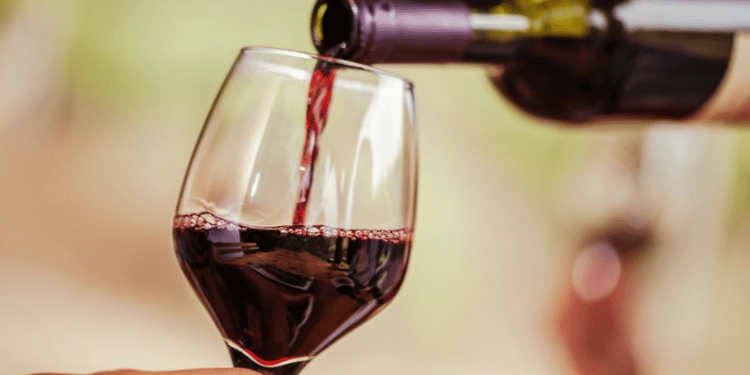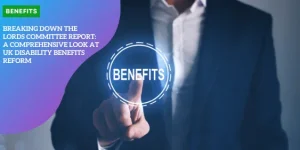Understanding the 30 New Wine Tax Bands: How Your Favorite Bottles Will Be Affected
Introduction to the New Wine Tax System
From February 1st, the UK government is set to introduce a significant overhaul to its wine tax system.
One of the most startling changes is the shift from a flat tax rate to 30 new tax bands based on the alcohol by volume (ABV) percentage of the wine.
This means that the tax you pay on wine will now correspond more closely with its alcohol content, fundamentally changing how wine is priced.
Shift from Flat Rate to 30 New Tax Bands
Previously, all wines with an ABV between 11.5% and 14.5% were lumped together under a single tax rate of £2.67.
This flat-rate approach is being replaced by a more granular system of 30 tax bands. Under the new system, every incremental 0.1% increase in ABV within this range will attract a higher duty.
This means that a wine with 11.6% ABV will have a slightly different tax rate compared to one with 11.7% ABV, and so on.
The Significance of ABV in the New Taxation Structure
The key factor driving this shift is the ABV, an indicator of how much alcohol is present in a wine.
ABV will become the primary measure for calculating duty—higher alcohol wines will face steeper taxes, aiming to encourage the consumption of wines with lower ABV.
This change is part of a broader effort to promote public health by discouraging excessive alcohol consumption.
The new tax bands, therefore, serve a dual purpose: they are designed to align with alcohol consumption patterns and to support public health objectives.
By increasing the cost of stronger wines, the government hopes to make high-ABV wines less attractive to consumers, nudging them towards lower-alcohol options.
Overall, this overhaul aims to strike a balance between public health interests and the economic needs of the wine industry.
As the new system takes effect, both consumers and producers will need to adapt to this more nuanced taxation approach.
This change could lead to long-term shifts in buying and production habits, adding a new layer of complexity to the wine market.
Understanding the 30 Tax Bands
The UK government is introducing significant changes to the wine tax structure, effective from February 1st.
As wines will now be taxed based on 30 new tax bands, it’s essential to understand how this impacts different alcohol levels and why this shift was made.

New Tax Bands Breakdown
Wines with an Alcohol By Volume (ABV) between 11.5% and 14.5% will no longer be subject to a flat-rate tax.
Instead, they will fall into one of the 30 new tax bands.
This means each 0.1% increment in ABV within this range results in a slightly higher duty.
For example:
- A wine with 11.5% ABV will fall into the first band of this new range.
- A wine with 11.6% ABV moves to the next band and incurs a higher duty.
- This continues incrementally up to the 14.5% ABV ceiling.
The rationale behind this method is to create a more precise taxation system that aligns with the alcohol content, which is often linked to both the production cost and the potential impact on health.
Impact of Incremental Increases
Every 0.1% increment in ABV leads to additional duty charges for wines within the 11.5% to 14.5% range.
This means the higher the ABV, the higher the tax:
- For instance, previously, a bottle of 13% ABV wine had a flat duty.
- Now, an additional 4p will be added per 250ml glass due to the new tax band system.
These incremental taxes are part of a broader push to encourage lower alcohol consumption by making higher-strength wines more expensive.
Conclusion of the Easement Period
The shift also marks the end of an 18-month easement period during which all wines in the 11.5%–14.5% ABV bracket were taxed at a fixed rate.
The easing phase served as a preparation period for both consumers and the industry to adjust to the forthcoming changes.
With the easement period concluding, wines will now be taxed precisely according to their ABV.
This will create more nuanced and often higher pricing structures:
- Consumers can expect increased prices on higher-ABV wines as the precise taxation begins.
- This transition period has been a topic of concern for industry stakeholders who were hoping for more gradual implementation.
These changes signal a notable shift in the pricing dynamics within the wine market and may lead to broader implications on wine purchasing habits and overall consumption patterns.
As the industry adjusts, both businesses and consumers will be navigating this new landscape together.
Impact on Wine Prices
Expected Price Increases
The introduction of the UK’s new wine tax structure on February 1st will lead to significant price changes for different types of wines.
This new system, which assesses wine taxes based on Alcohol By Volume (ABV), involves 30 distinct tax bands.
Previously, wines within the ABV range of 11.5% to 14.5% were taxed at a flat rate of £2.67.
Now, each 0.1% increase in ABV will result in additional duty. This change is expected to increase the cost of roughly 43% of all wines, disproportionately impacting higher-ABV wines, particularly red wines.
Specific Examples of Higher ABV Wines
For wines with higher alcohol content, the new tax bands will mean a notable increase in duty charges.
For instance, a bottle of wine with a 14.5% ABV will see its tax rise by 54p.
Red wines, usually falling into the upper range of ABV, will therefore become more expensive for consumers.
This contrasts significantly with previous taxation, impacting consumer choices and potentially leading to less market demand for higher-ABV wines.
Breakdown of the 8p Increase
Under the new taxation structure, a 250ml glass of wine with a 13% ABV will see an 8p increase in price.
This increase is broken down into two parts: 4p due to inflation and another 4p resulting directly from the new tax bands.
While this may seem moderate on paper, it can add up significantly for regular wine consumers, altering purchasing behaviors and market dynamics over the long term.
As this new cost structure rolls out, wine lovers will need to adapt to the increased prices, potentially exploring lower-ABV options to mitigate costs.
The industry will also grapple with these changes, adjusting both pricing strategies and marketing efforts to align with the new taxation landscape.
Industry Response and Concerns
Wine and Spirit Trade Association’s Warnings
The introduction of the new wine tax system has generated significant concerns within the industry.
The Wine and Spirit Trade Association (WSTA) has been vocal about the potential impact on consumer costs and business profitability.
According to Miles Beale, the chief executive of WSTA, the more considerable tax burden could lead to higher retail prices and potentially lower overall wine sales.
The shift to 30 new tax bands, where incremental increases in ABV result in higher duties, poses a particular challenge.
Critics argue that the precision of the new system may introduce complexity and unpredictability in pricing, which could hurt both retailers and consumers.
Potential Impact on Wine Sales and Profits
As wine prices increase, industry stakeholders fear that sales might decline.
Given that higher-ABV wines, especially red wines, will face steeper price hikes, consumers may opt for less expensive, lower-ABV alternatives.
The anticipated price rise of an 8p increase per 250ml glass of 13% ABV wine is just one example of the financial pressures that could shape buying behaviors.
The end of the 18-month easement period, during which wines between 11.5% and 14.5% ABV were taxed at a flat rate, adds to the uncertainty.
Now, as wines are taxed precisely based on their ABV, the diversity and competitiveness of the market might be affected.
The increased costs could further strain businesses already dealing with high operational costs and economic downturns.
Concerns About Wine Variety and Quality
Industry stakeholders are also worried about the potential impact on the variety and quality of wines available in the market.
Wineries might adjust their production to focus on lower-ABV wines to minimize tax liabilities, which could result in a reduced selection of high-quality, higher-ABV wines.
This shift might lead to a broader homogenization of wine products, where innovation and diversity are sacrificed for tax efficiency.
The long-term effect could be a market with fewer choices, potentially alienating consumers who value the rich variety and higher quality of traditional wines.
As these changes unfold, it’s vital to stay informed about how consumer habits and industry strategies will evolve in response to the new wine tax system.
Consumer Implications and Future Outlook
As the new wine tax system rolls out on February 1st, consumers will feel the pinch in their wallets.
This transformation is set to influence buying habits and future consumption patterns, leading to a significant shift in the wine market.
How These Changes Might Influence Consumer Buying Habits
The anticipated price increases on higher-ABV wines will likely cause consumers to reevaluate their purchases.
The introduction of 30 new tax bands means that wines with higher alcohol content will see steeper price hikes.
For example, a bottle of 14.5% ABV wine will rise by 54p in tax.
This will likely shift consumer preferences towards wines with lower alcohol content to avoid higher costs.
Potential Shift Towards Lower-ABV Wines
With the government aiming to promote healthier drinking habits, the financial incentive to purchase lower-ABV wines could be effective.
Consumers might opt for wines below 11.5% ABV, which fall outside the steep new tax bands.
This could lead to a rise in the popularity of lighter wines and a decline in high-ABV red wines.
The market may see an influx of new, lower-ABV options as producers adapt to consumer demand and tax efficiencies.
Long-Term Effects on Wine Consumption Patterns and Public Health Objectives
The long-term effects of these tax changes align with public health goals.
By making higher-ABV wines more expensive, the government hopes to reduce overall alcohol consumption.
Over time, this could lead to:
- A general decline in the consumption of high-ABV wines.
- Increased demand for lower-ABV options.
- Potential health benefits as consumers shift towards drinking less alcohol.
While it’s too early to predict with certainty, these changes might lead to healthier drinking habits among the population, reflecting the primary objective of the new tax system.
As we move forward, the wine market, industry stakeholders, and consumers will continuously adapt to these new tax regulations.






